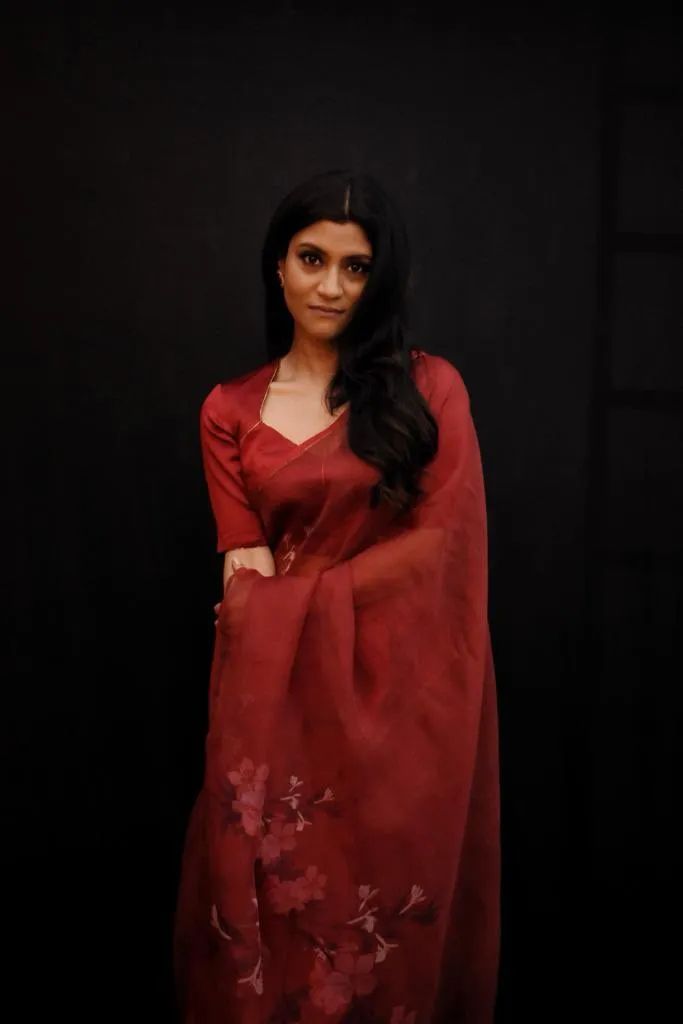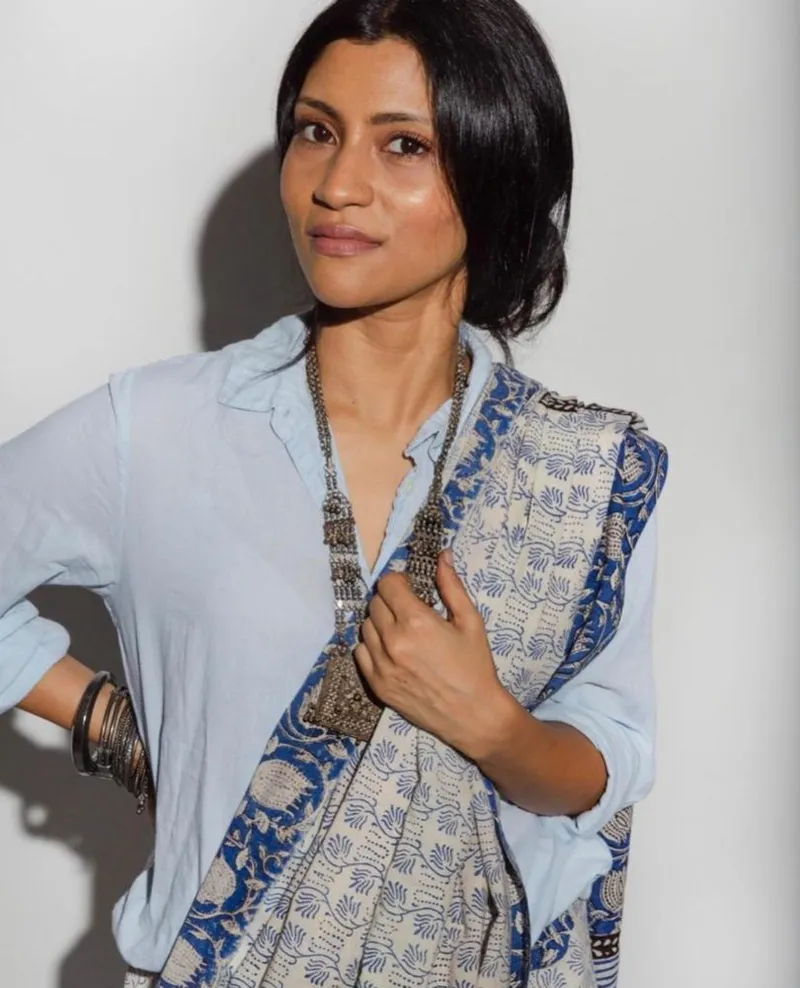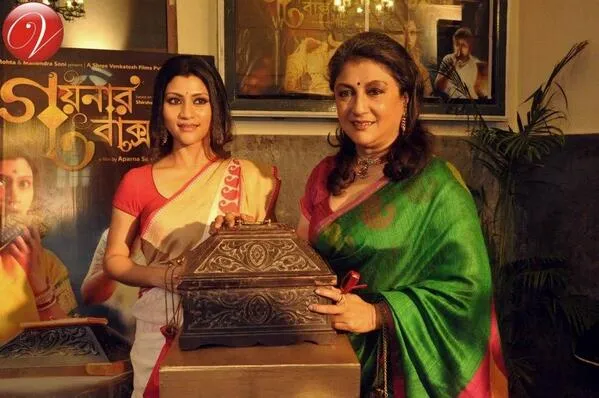An accidental actor: Konkona Sen Sharma on rolling with the punches
Actor and filmmaker Konkana Sen Sharma never wanted to get into the film industry, but she decided to give it a shot. Twenty-five years and 63 films later, the actor doesn’t bother to analyse.
Being a journalist comes with an unsaid rule—when you meet someone for an interview, you spend the first few minutes making them feel comfortable to ensure they eventually reveal their most authentic selves. But that was not the case while interviewing actor and filmmaker Konkona Sen Sharma.
A National Award Winner and a trailblazer in mainstream cinema, I expected Sen Sharma to be uptight and rigid, to say the least. However, my expectations were shattered with a cheerful “Hello!” and a friendly wave at the camera. I immediately felt comfortable.
Seated in an electric blue pants-suit, Sen Sharma is exactly how you would expect her mother, celebrated actor and director Aparna Sen, to be like—poised, elegant, and yet, authoritative.

Actor and filmmaker Konkona Sen Sharma | Image source: X (previously Twitter)
Growing up in a small-town, my mother never took me to watch Sen’s movies, “You need to wait until you turn 18 (years)!” she would always say. And once I was an adult, I spent sultry summer afternoons watching the very same films with my mother, in awe.
“That’s the case with my nieces and nephews! They are not allowed to watch my movies yet…But you know that was never the case with my mum (Aparna Sen) and me. She let me watch all that,” says the quadragenarian, in the most authentic and candid way possible.
YS Life caught up with Sen Sharma on the sidelines of the launch of P&G Shiksha’s latest campaign around #StandUpForLearningGap—aimed at spreading awareness about the learning gap in schools.
Having been earlier associated with P&G Shiksha for promoting the building of school infrastructure, Sen Sharma says, “This is an issue close to my heart…Until the age of 13, I was a terrible student…I was in an old-fashioned school which focused on rote-learning. It was only when I changed schools and went to an international one that I improved academically…It also gave me a certain self-confidence. I think this is a wonderful initiative, to be able to help the underserved communities and spread awareness about the learning gap.”
It’s not everyday that one meets a silver-screen star who proclaims to be a mediocre student, and an ‘accidental’ actor. And one definitely does not expect to hear the same from an actor who won a National Film Award within the second year of debut in the film industry (Mr. and Mrs. Iyer, 2002).
“I didn’t want to become an actor, nobody ever said it to me or forced me to become one…I was quite a drifter, a dreamer…And spent a lot of time on my own reading, spending hours day-dreaming, and accompanying my mother to film sets, to her workplace, and travelling abroad with her to film festivals,” Sharma says.
As the daughter of one of Bengali cinema’s most-acclaimed actor and director, Aparna Sen, and celebrated writer and journalist Mukul Sharma, Sen Sharma was never caged into becoming something. “I had a very unconventional upbringing and family, in that sense.”

Image source: Facebook
“In the early years, there was a certain discomfort…I was offered films and I wasn’t very sure if I wanted to do it. I never had a burning desire to be a doctor or try any other profession either…it was more like a ‘let’s roll with the punches’ situation, and then I found out that I was one (actor)!”
Sen Sharma made her debut as a child artist at the age of four in her mother’s film, Indira (1983). Her full-fledged entry into the film industry was in 2001, with the Bengali film Ek Je Aachhe Kanya. She also starred in Rituparno Ghosh’s Titli (2002), opposite her mother and Mithun Chakraborty, before achieving her break-through with Mr. and Mrs. Iyer, again directed by her mother.
Later in her career, Sen Sharma went on to work with Aparna Sen in 15 Park Avenue (2005), Iti Mrinalini (2011), Goynar Baksho (2013), and more recently, The Rapist (2021).
Was there any pressure working with a celebrated-mother? YS Life asks.
“There’s no pressure at all. I’ve been working with her since I was a kid. I was directed by her when I was nine-years old (Sati, Picnic)...I always felt loved and nurtured.”
Her most-celebrated mainstream and commercially successful works in the silver-screen include Life in a… Metro (2007), Luck by Chance (2009), Wake Up Sid (2009), Talvar (2015), and Lipstick Under My Burkha (2016).
“When you are acting, your body is on loan to your character…You’re lending your physicality and you don’t know what remains psychologically. For instance, when I played Nupur Talwar (in Talwar), I remember watching her interviews and there was a nodding habit which I had picked up and which stayed with me a long time,” Sen Sharma reminisces.

Sen Sharma with her actor-director mother, Aparna Sen | Image source: X (previously Twitter)
Similarly, she continues, “When I did Mr. and Mrs. Iyer, I used to say ‘Aiyoo’ a lot more…After I played a character who had schizophrenia in 15 Park Avenue, my affinity towards families with schizophrenia still remains to this day.”
In 2017, Sen Sharma made her directorial debut with A Death in the Gunj. Premiered at the Toronto International Film Festival, the movie received widespread critical acclaim.
“It (A Death in the Gunj) is really like a stamp of my personality, my world. It is the closest to me, and will give you more of an insight into me than any other work that I have done.”
More recently, the actor has been on a streaming spree with films including Dolly Kitty Aur Woh Chamakte Sitare (2020), followed by Ramprasad Ki Tehrvi (2021), Geeli Pucchi (for Ajeeb Daastaans, 2021), and Mumbai Diaries 26/11 (2021). Her second directorial project was The Mirror for Lust Stories 2 (2023).
Usually with an inclination towards ‘artistic’ scripts, Sen Sharma explains, “I really go with my gut (when selecting scripts). It (the script) has to be believable, interesting, and engaging. Next, the character, and finally, the director plays an important role too…they are the captain of the ship.”
Twenty-five years in the industry, and more than 63 cameos and films later, Sen Sharma says, “My films didn’t have mass appeal, but they did have some kind of appeal…I never bothered to analyse that…I just saw that I was feeling fulfilled…I was getting enough work. And eventually I reached a place where I was satisfied. And today, I am grateful,” she concludes with the brightest of smiles. And the satisfaction gleams through her eyes.
Edited by Megha Reddy







